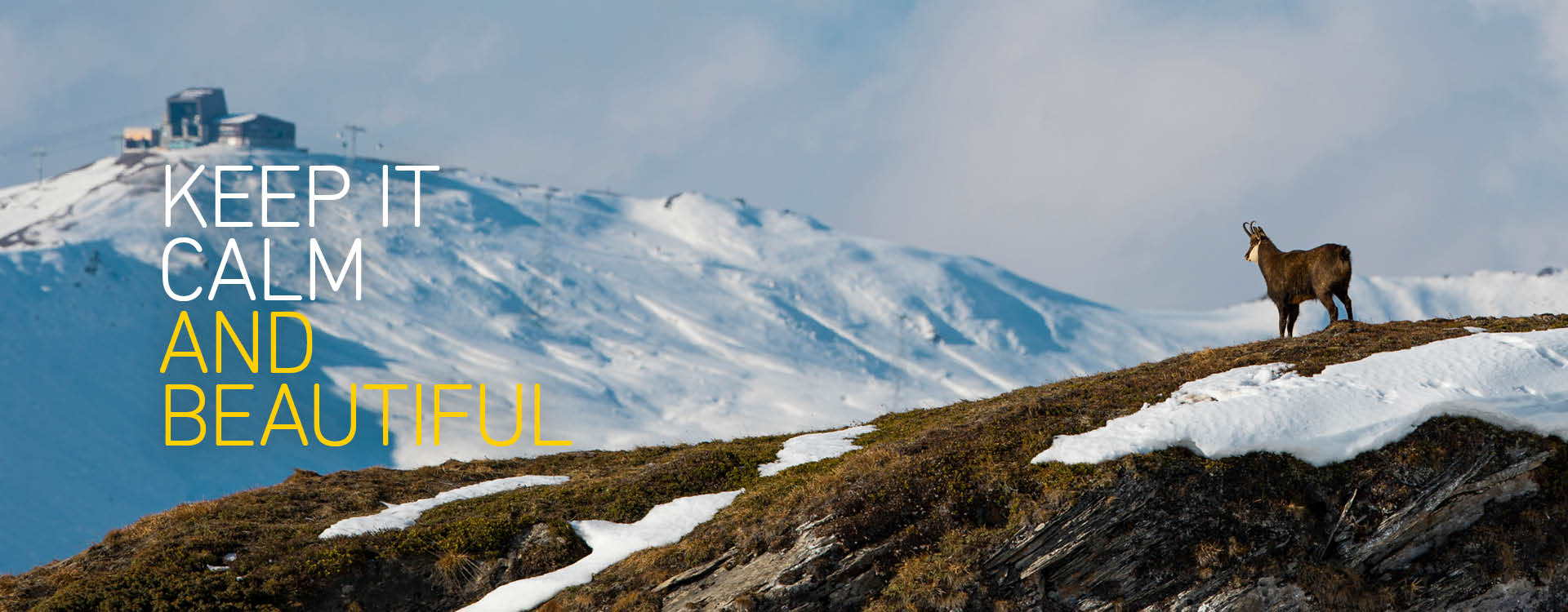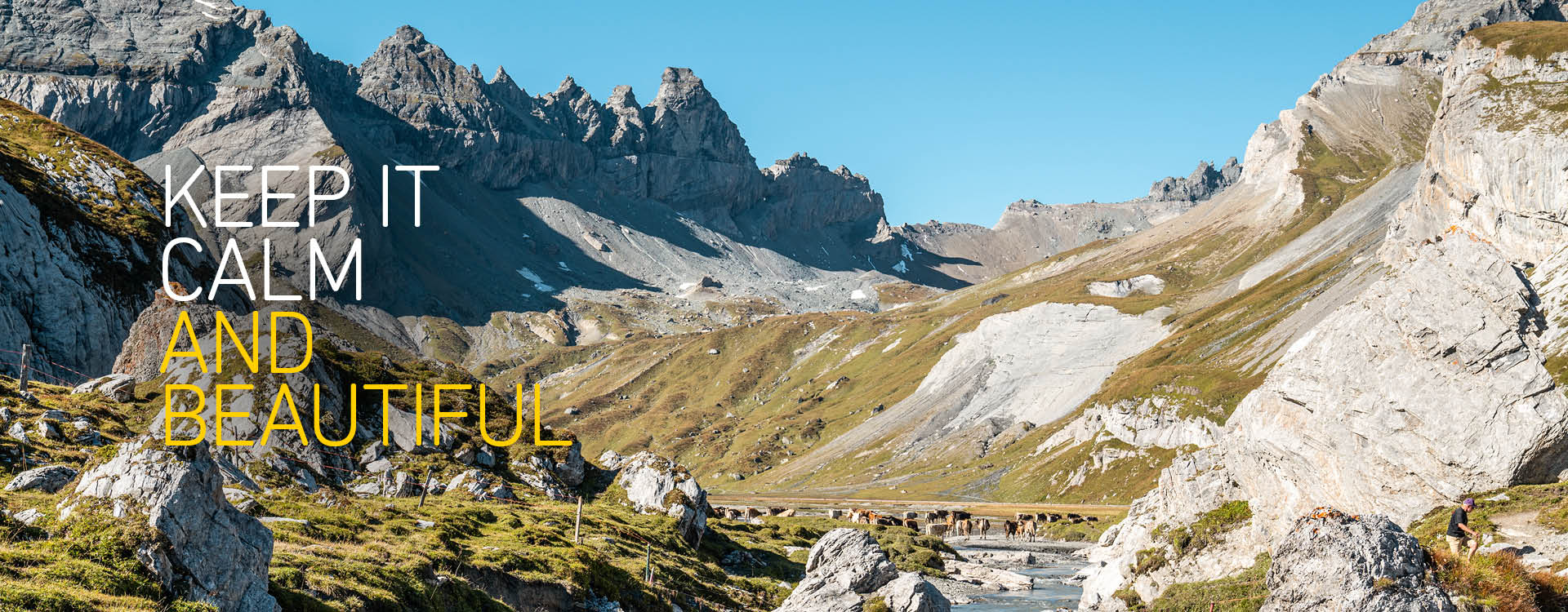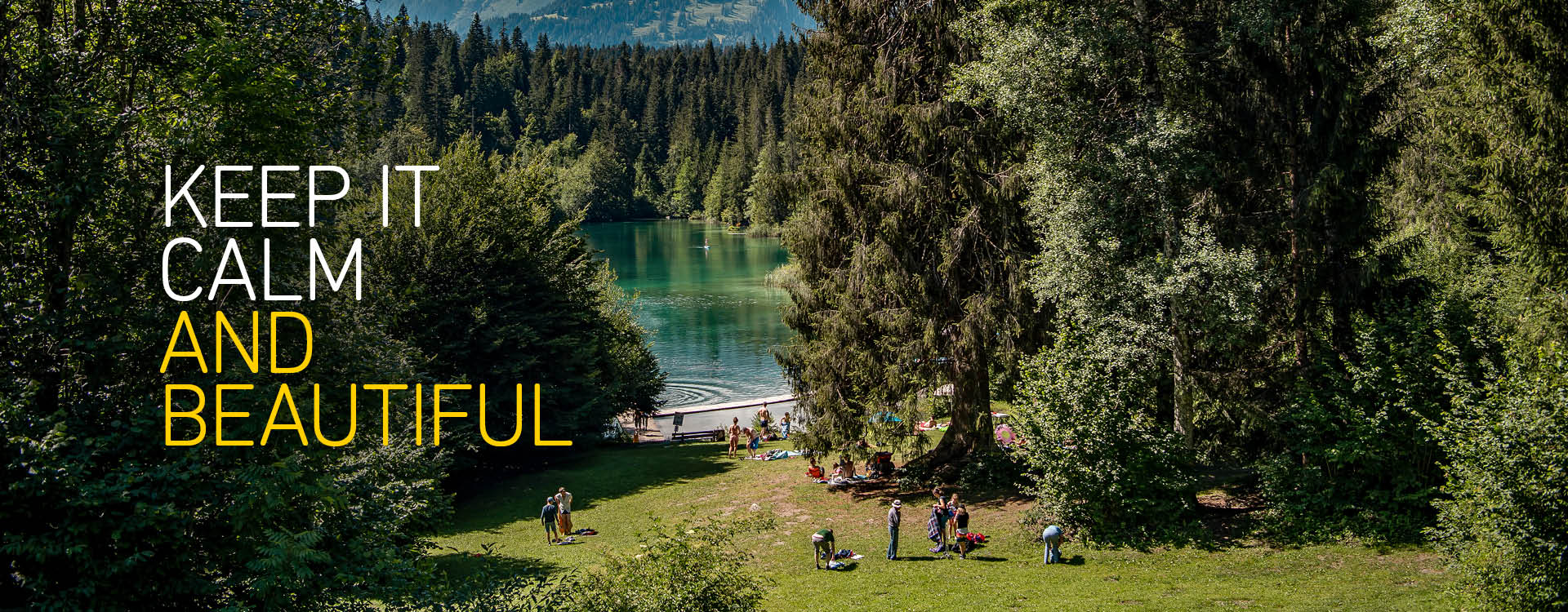OUR WILDLIFE
WILDLIFE
We want our wildlife to feel as comfortable at our place as you do. To ensure that this is not just an avowal we offer sanctuaries and rest areas to our wild animals. This pleases not only our elusive wild inhabitants but also you. Presumed that you are patient, careful and wary – there is hardly any other place where you can observe so many beautiful and proud animals as over here.
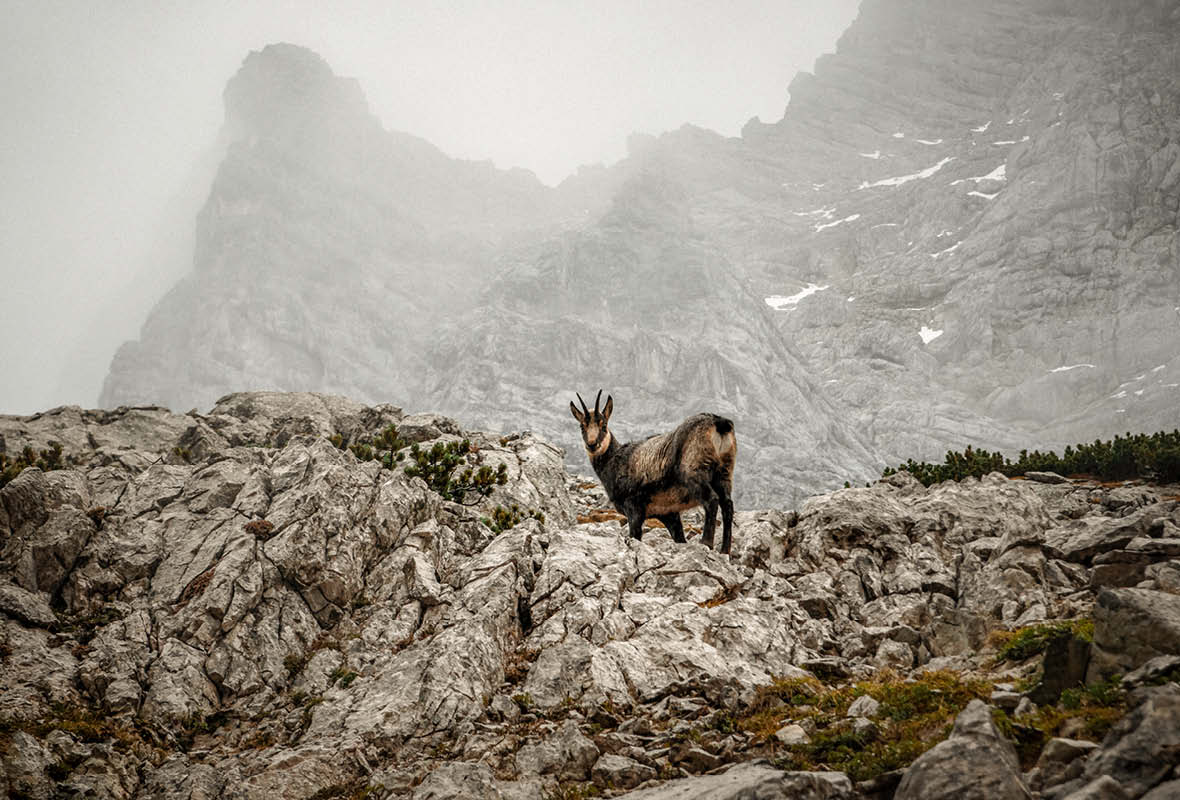
Ibex, groundhog, chamois and of course the wolf are the animals that cross your mind when you think of the Grisons mountains, right? In addition to these animals, which are very present in the media and are always in the spotlight, there are also the chary ones. The capercailye, for example, an animal that is critically endangered throughout Switzerland has therefore been given its own seperate sanctuary in the woodlands here in Flims. When in autumn one of the last capercaillies in Switzerland performs its courtship dance and flounce around on the clearing with fanned tail and heads up high, it is not only the female capercaillies who are amazed. To ensure his existence as undisturbed as possible in future, the separate sanctuary is very important.
Another resident of the magical Flims nature also has a distinct need for peace and quiet: with a bit of luck, you will meet a rare freshwater inhabitant at Lake Cresta or Lake Cauma - the white-claw crayfish. You may observe it as it explores the sandy bottom in its unhasting manner. However, you should never take hold of it - like all wild animals, it is not used to humans and can get into a life-threatening stress situation just at a slight touch.
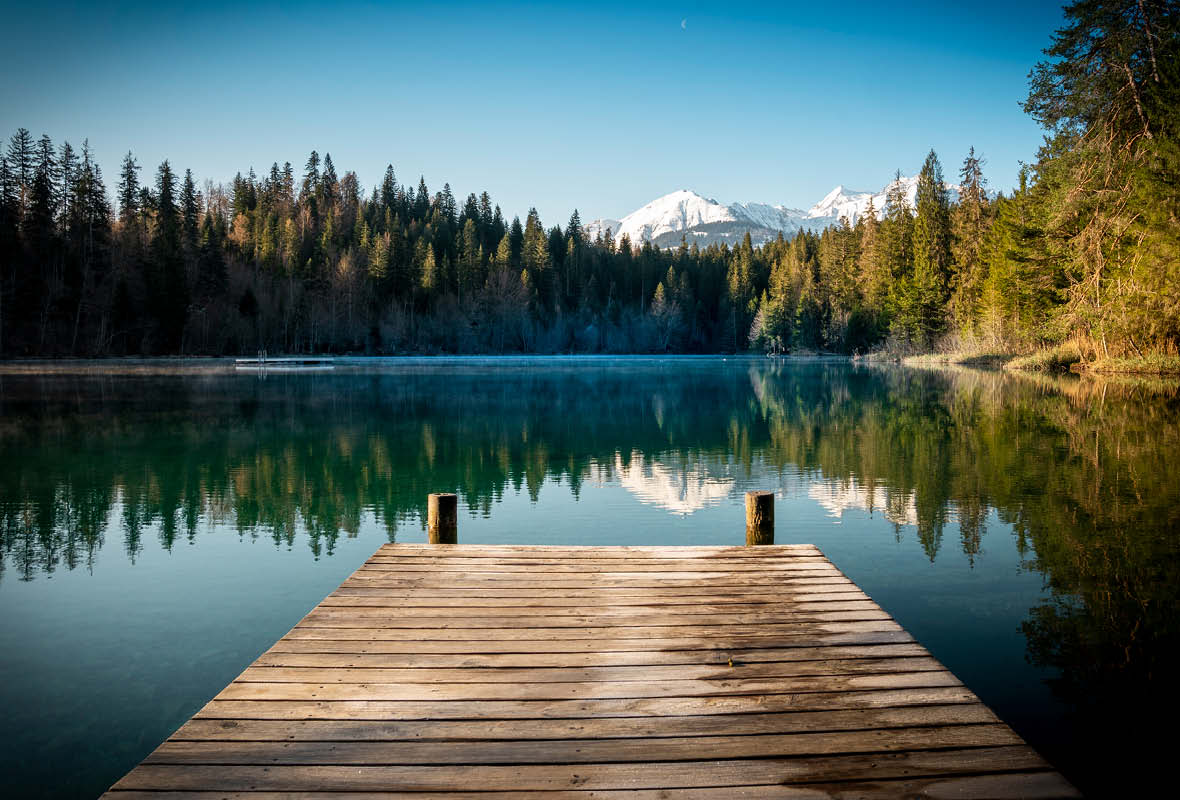
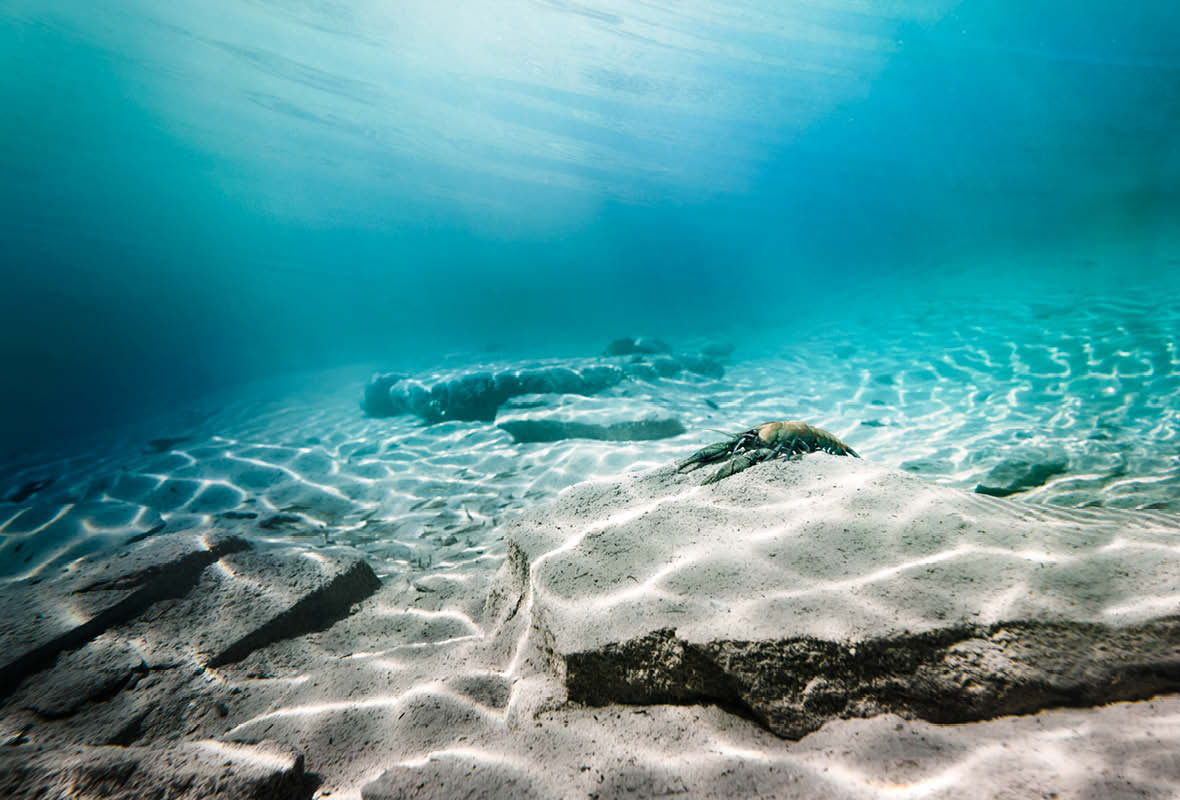
Hundreds of meters further down in the Rhine Gorge, you will find the home of the sandpiper. It likes solid, sandy ground and open, shingly spots - just the spots where you like to place your towel or cool off your feet after a long hike. To protect the rare bird species, specific zones are explicitly blocked from April 1 to July 15. Either way, a little thoughtfulness is wise – take a closer look before you sit down. If there is a nest with eggs between the stones which is barely covered by a tuft of grass, you'd better decide for another place to relax. The little bird will thank you with a few of its characteristic curtsy and bobbing movements.
Whether capercaillie cock, mountain jackdaw or ibex - the following applies to all our wildlife: They will gladly allow you to deign a look, but you should never approach them or even feed them. They are perfect hunters and gatherers for berries or insects. As such, they can manage their meals quite well without your sandwich or your remaining carrot sticks. But most importantly, if you are a winter sportsperson, you should stay off the signposted protection and wildlife rest zones. Especially for hoofed game, i.e. chamois, ibex, deer and stag it can be fatal to be scared up in the middle of winter.
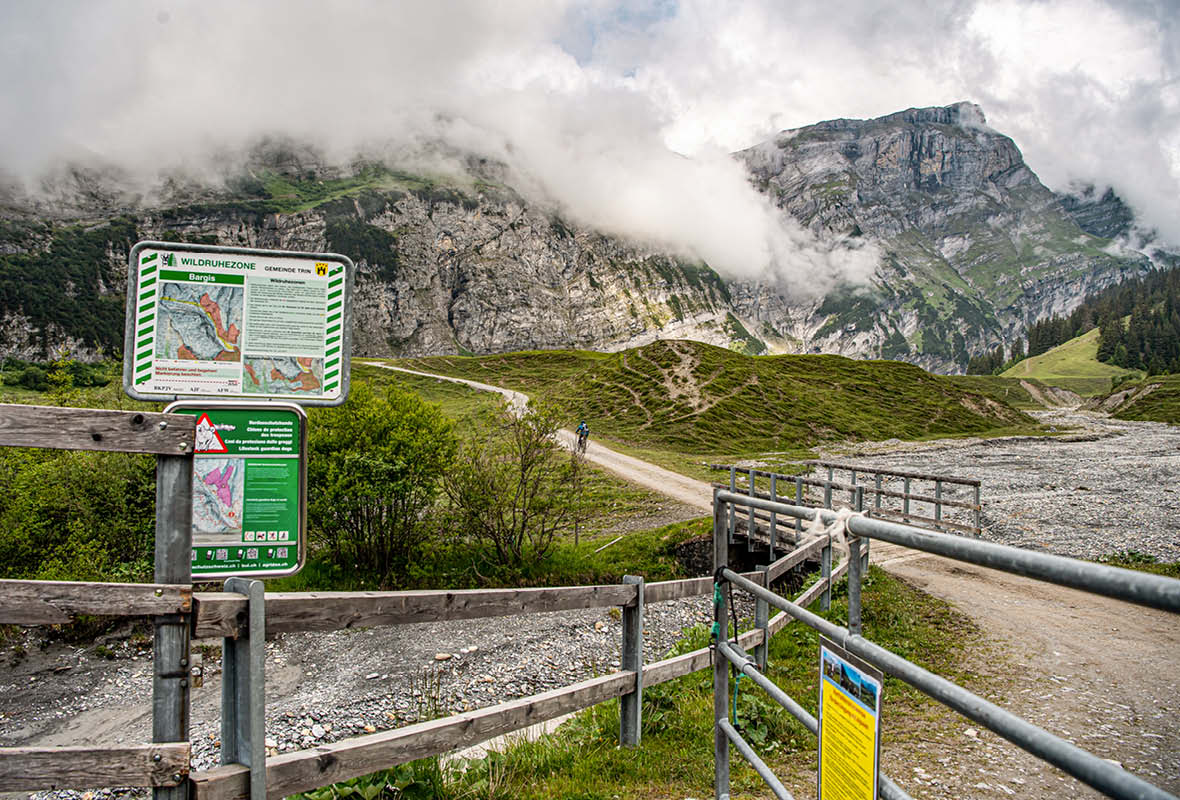
OUR WILDLIFE
MOTHER COWS AND HERD PROTECTION
The destination Flims Laax Falera digitally records areas with mother cows and guard dogs. Tracking devices help to locate the particular positions of suckler herds and guard dogs. Important: even if a terrain is not marked as a field on the digital map, you may still come upon mother cows or guard dogs during your hike. Should this be the case, you will know how to act thanks to our instructions and tips.
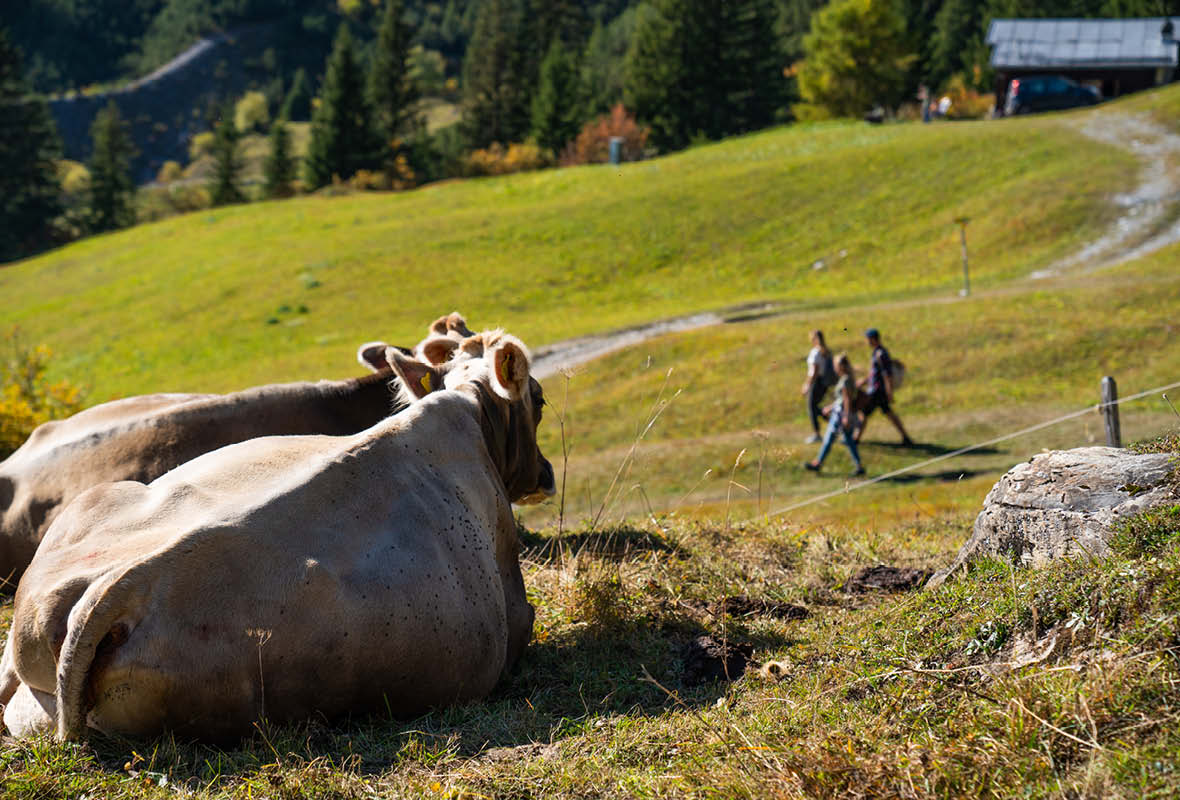
Suckler herd
There are a few simple rules how to deal with mother cows and their calves:
Rule number 1 is that whenever possible you should keep sufficient distance to the cows and their young ones. Pretty similar to humans cows and cattle need their personal space. If get too close, the mother cows can get annoyed. Rule number 2 is also comprehensible: No matter how sugar-sweet they look, you should never touch the calves. The mother cows don't like that even if they are grazing or resting a little further away. Rule number 3 implies that you have to keep your dog leashed and distance to the herds. Even if you are only carrying your aunt's lap dog, cows will rate your dog as a dangerous predator regardless of size or physical appearance and will react accordingly.
Here you can find the interactive map with the marked pasturelands and more worthwile information on how to handle mother cows and their calves.
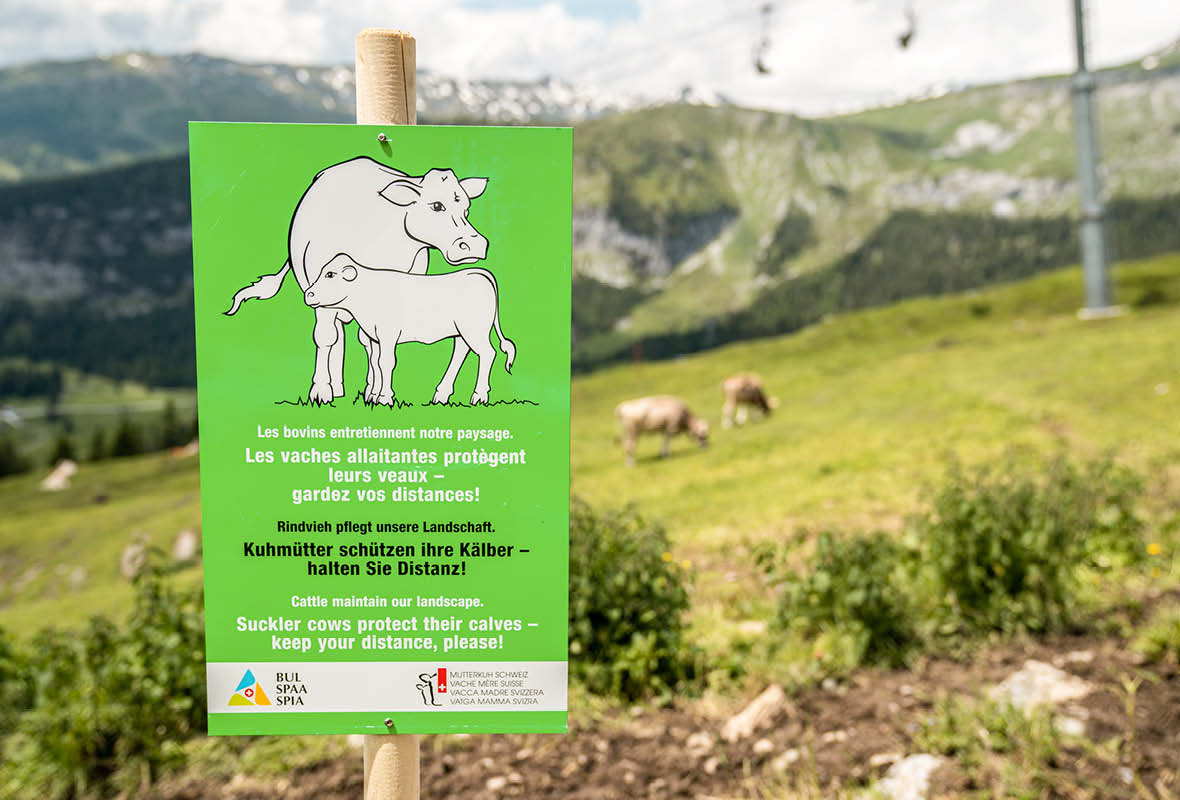
Herd protection
A few years ago the wolf reimigrated. While he is rarely put in an appearance in the lowlands, three wolf packs have settled in the Ringelspitz, in the upper Surselva and in the Val Gronda. One of the most effective means to protect the sheep from the wolf is the use of dogs, which have a strong protective instinct and are fearless. The guard dogs accomplish the task perfectly. As it considers any trespasser potentially dangerous, there are a few simple rules you should keep in mind:
Code of conduct
Slow down your pace and don’t startle the animals, don’t catch the dogs unaware buth rather call their attention by talking loudly.
Guard dogs targeting and barking at you
Easier said than done. Stand to the spot and keep calm. Give the dogs the time to assest he situation. You should neither gaze at the dogs nor address them directly and of course do never touch them.
If the guard dogs don’t fall calm
Back out and keep distant from the herd, prevent to gaze at the guard dog. If it is not possible to steer clear of the herd you need to turn around and go back the same way. If you push through the herd you will be bitten at its worst – and this isn’t necessary.
Here you can find the interactive map with the marked pasturelands and more worthwile information on how to handle the guard dogs.
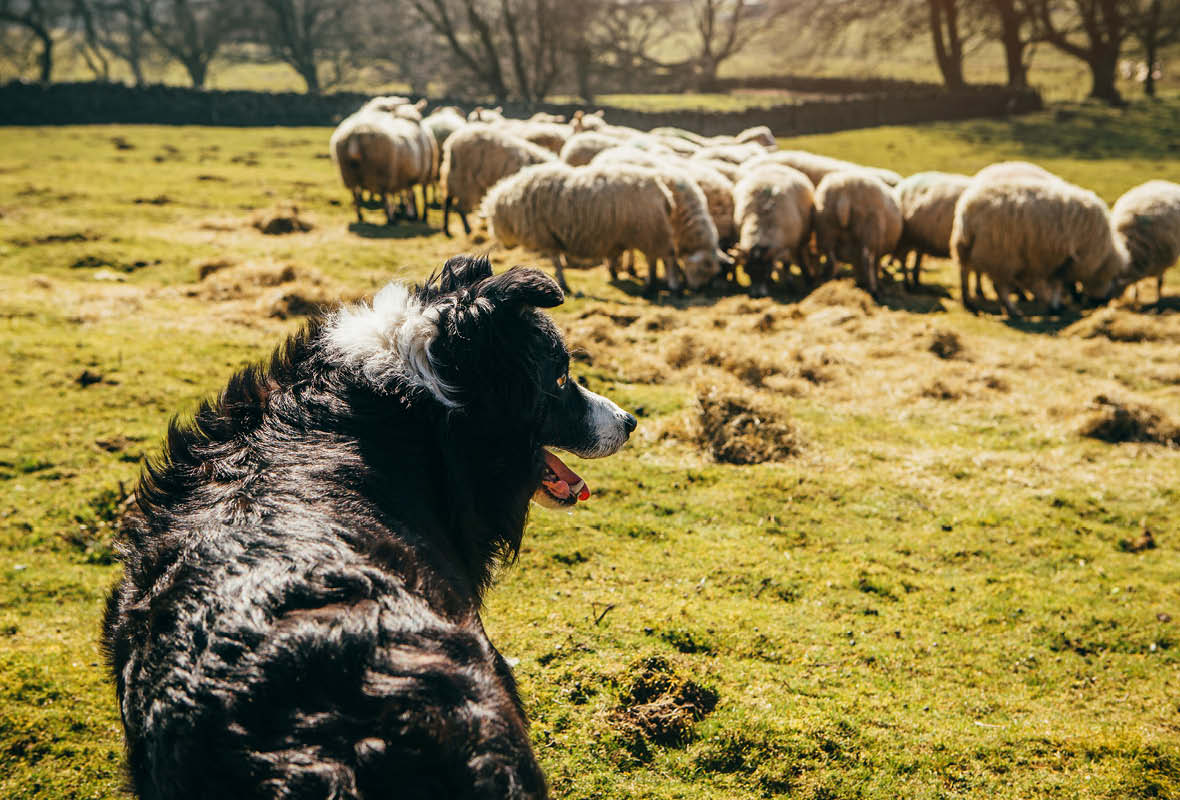
OUR WILDLIFE
HUNTING & FISHING
Handling nature wary does not exclude hunting and fishing per se. Subsequent you will learn what is important to us. Some rules you have to follow when you are out and about in our woodlands and waters with your blunderbuss or pole.
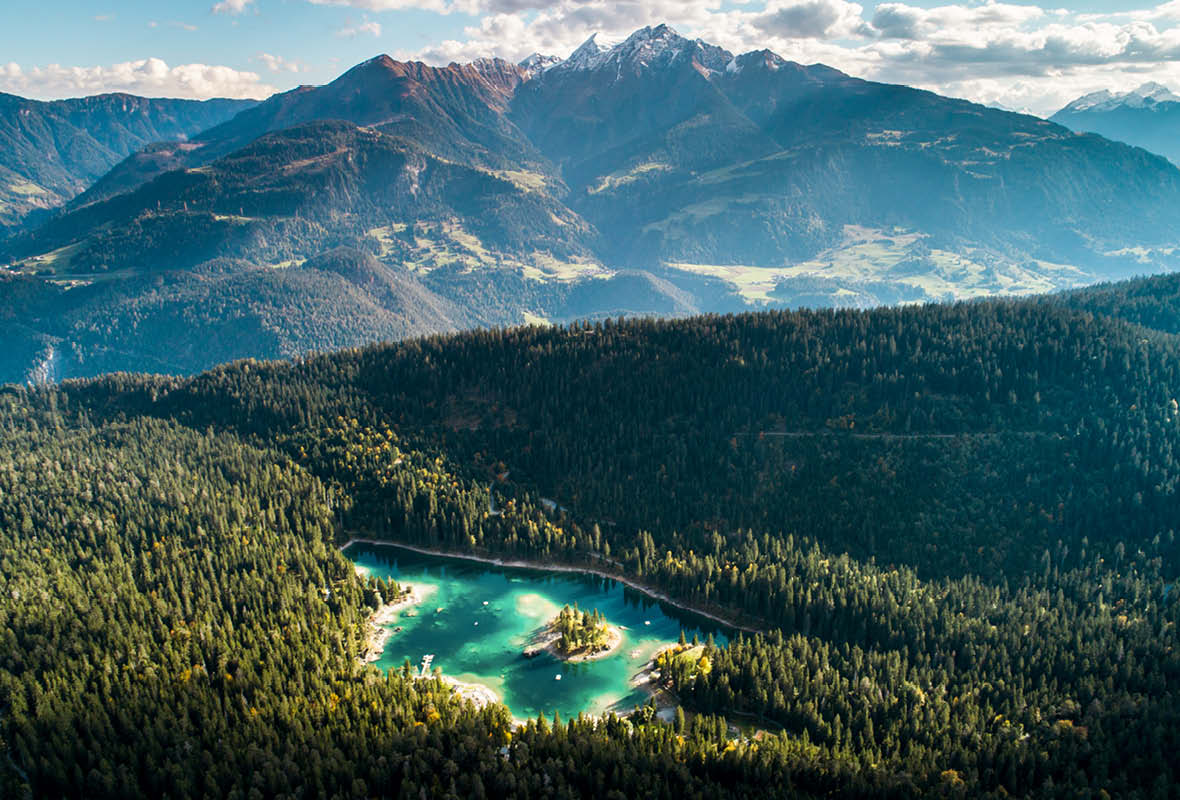
Like everywhere else in Switzerland, the canton of Grisons also has a strict game law. It defines when the wild animal hunt is licit and which animal species are eligible to be declared for open season. In the canton of Grisons you are only allowed to go deerstalking after you have passed the hunting exam. Here you will find all the details on the closed as well as hunting seasons and on the hunting exam, which can be completed in the form of a challenging seminar within 16 months. If you have already passed the hunting exam, you can learn more on the website of the “Amt für Jagd und Fischerei” where you can redeem your annual commission.
As distinct from hunting, where overpopulation sometimes leads to significant damage to woodlands, the state of facts is different when it comes to fishing. For our two sparkling paradises, Lake Cresta and Lake Cauma, the “Amt für Jagd und Fischerei” reports a very low annual revenue. The situation is slightly better for the running waters not least due to the successful renaturation, the Bodensee trout is again returning to spawn.
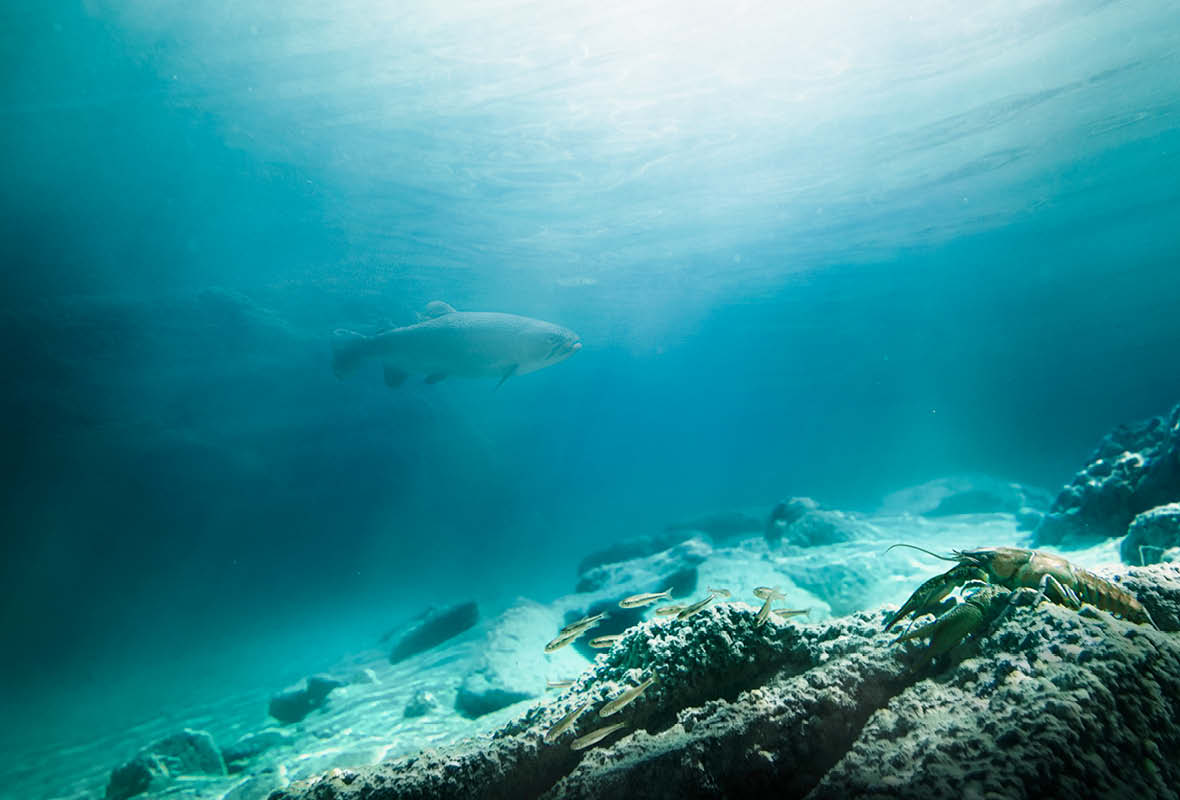
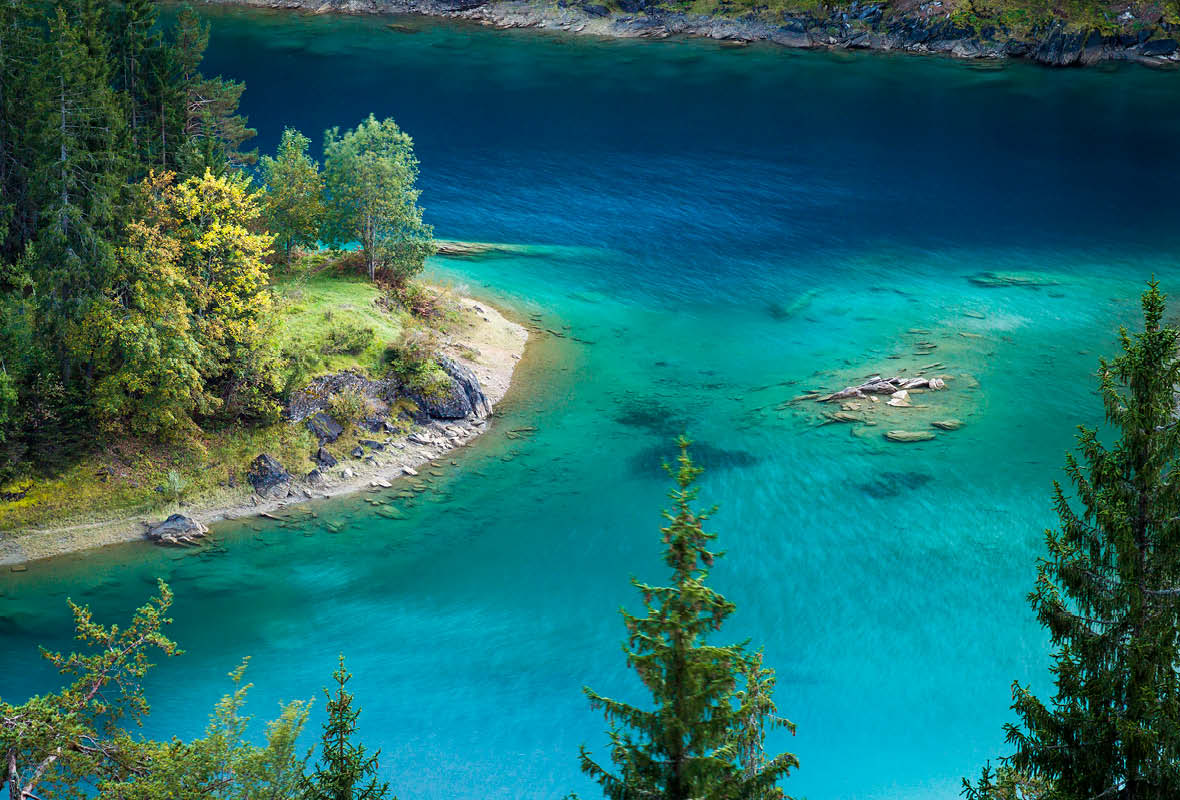
Long time ago back in our great-grandfather’s days we had paradisal fish populations. As a cautious fisherman or fisherwoman, you will support us in our attempt that our populations can sustainably rebound bit by bit.
For your fishing trips in Flims and the surroundings, you need analogous to hunting, a successfully completed fishermans seminar as well as a commission which is valid for the canton or our area. The relevant information on the acquisition of the necessary documents as well as useful details on the closed seasons and fishing periods can also be found on the website of the “Amt für Jagd und Fischerei” of the canton of Grisons.

